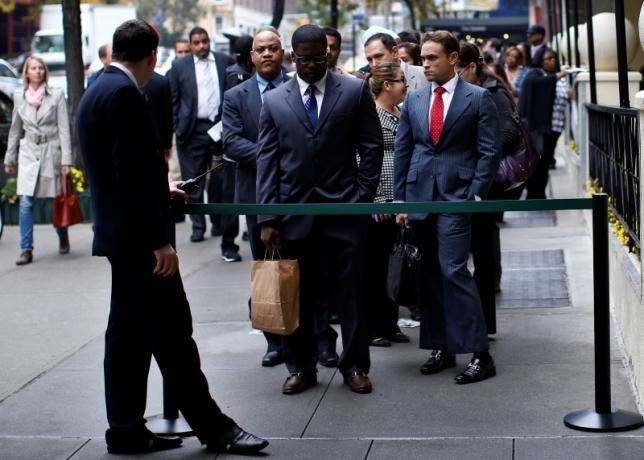Coronavirus Economy: Initial Unemployment Claims In The Millions For 9th Week, More Than 38 Million Since Mid-March

KEY POINTS
- 2.4 million initial unemployment claims were filed in the week ended May 16.
- The four-week moving average stood at more than 3 million, a decrease of 501,000 from the previous week
- The number of claims for the week ending May 9 was revised downward by 249,000 to nearly 2.7 million
More than 2.4 million Americans filed initial unemployment claims last week, bringing the total since mid-March to more than 38 million, the Bureau of Labor Statistics reported Thursday. The total was the fewest in the last nine weeks but pushed the estimated unemployment rate for May to 17.2%.
The BLS revised downward the estimate for the week ended May 9 by 294,000, bringing it to nearly 2.7 million and bringing the four-week rolling average to more than 3 million. It was the ninth straight week of filings in the multiple millions triggered by shutdowns across the nation because of the coronavirus pandemic.
More than 93,400 Americans have died from COVID-19.
Last week’s filings pushed the estimated May unemployment rate to 17.2 percent, up from 14.7% in April and 2 points higher than last week’s estimate. The Congressional Budget Office this week estimated COVID-19 would keep the unemployment rate high, with the rate averaging 9.3% through 2021. Before the pandemic hit, the unemployment rate was at a historic low, 3.5% in February.
“With economic activity still largely seized and Americans unable to go back to or find work, the unemployment rolls have swelled,” Andrew Stettner, senior fellow at the Century Foundation and one of the nation’s leading UI experts, said in a statement emailed to IBTimes.
He added: “Treasury Department data reported separately show that $48 billion in aid was delivered in the first two weeks of May alone -- as much as was paid in the entire month of April. This translates into an average of approximately 25 million weekly payments for the first two weeks of May.”
More than 27 million Americans were receiving unemployment benefits by May 2, with more than 6 million in 27 states claiming Pandemic Emergency Unemployment Compensation benefits.
The highest levels of unemployment were reported in Nevada, Michigan, Washington, Rhode Island and New York, with the biggest increases coming in Florida, Georgia, Washington, New York and South Dakota. Unemployment fell the most in California, Texas, Oklahoma, North Carolina and Missouri.
Stettner urged Congress to extend coronavirus mitigation programs as states begin reopening, noting reopening does not equate with rehiring.
“Among the 35 states that have begun to open their economies statewide, initial claims only declined by 14 percent last week from the prior week,” he said.
The House voted last week to approve a $3 trillion coronavirus relief package that would double the current level of spending to stem the economic fallout from the pandemic. President Trump and Senate Republicans, however, have rejected the measure and indicated they are in no hurry to pass another aid bill despite warnings from Federal Reserve Chairman Jerome Powell that a failure to act now could result in a long and painful recession.
© Copyright IBTimes 2025. All rights reserved.






















